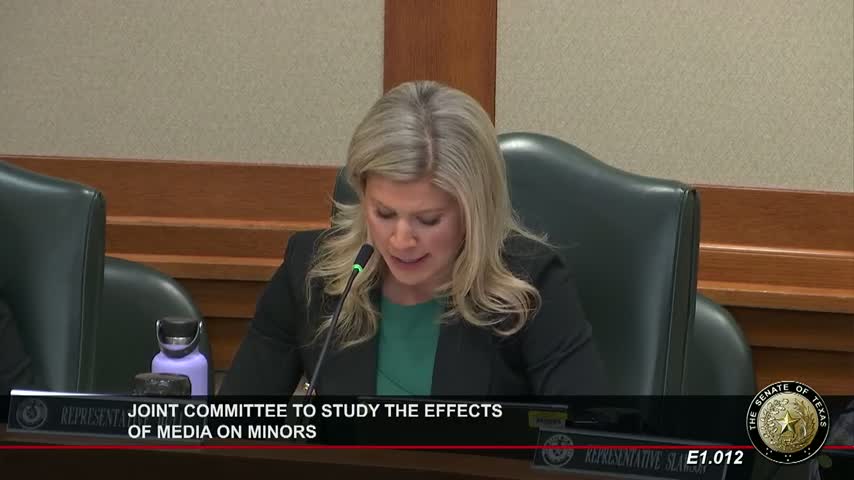Texas lawmakers address child safety concerns over school-issued devices and online predators
January 07, 2025 | Select, Interim, and Joint Committees, Senate, Legislative, Texas
This article was created by AI summarizing key points discussed. AI makes mistakes, so for full details and context, please refer to the video of the full meeting. Please report any errors so we can fix them. Report an error »

In a recent meeting of the Joint Committee to Study the Effects of Media on Minors, Texas lawmakers addressed pressing concerns regarding the safety of children using school-issued devices. The discussions highlighted the challenges parents face in protecting their children from online dangers, particularly when they are outside of their supervision.
Committee members emphasized that while parents can take precautions at home, such as restricting social media access, children are still vulnerable when using devices at friends' houses or schools. This concern was underscored by testimonies from constituents who reported that their children had been approached by online predators through school-issued devices. Lawmakers noted that many parents mistakenly believe these devices are inherently safe, which is not always the case.
The committee reviewed the implementation of House Bill 18, which aimed to establish guidelines for the appropriate use of school-issued devices and limit the amount of time children spend on them. However, it was revealed that many school districts are not adhering to these guidelines, prompting calls for stronger enforcement and accountability measures in the next legislative session.
Another significant topic discussed was the issue of data mining on school devices. Lawmakers expressed concern over the appropriateness of questions being posed to young students, such as inquiries about their emotional state. There were worries about where this data goes and how it might affect children in the long term.
The committee also touched on the broader implications of mental health in children, criticizing the focus on profit-driven healthcare rather than preventive measures. Lawmakers expressed frustration over the lack of attention to the root causes of mental health issues among youth, advocating for a more proactive approach.
As the committee prepares for the next session, there is a clear commitment to ensuring that school districts follow established guidelines and to address the ongoing challenges of protecting children in an increasingly digital world. The discussions reflect a growing recognition of the need for comprehensive strategies to safeguard minors from the potential harms of media and technology.
Committee members emphasized that while parents can take precautions at home, such as restricting social media access, children are still vulnerable when using devices at friends' houses or schools. This concern was underscored by testimonies from constituents who reported that their children had been approached by online predators through school-issued devices. Lawmakers noted that many parents mistakenly believe these devices are inherently safe, which is not always the case.
The committee reviewed the implementation of House Bill 18, which aimed to establish guidelines for the appropriate use of school-issued devices and limit the amount of time children spend on them. However, it was revealed that many school districts are not adhering to these guidelines, prompting calls for stronger enforcement and accountability measures in the next legislative session.
Another significant topic discussed was the issue of data mining on school devices. Lawmakers expressed concern over the appropriateness of questions being posed to young students, such as inquiries about their emotional state. There were worries about where this data goes and how it might affect children in the long term.
The committee also touched on the broader implications of mental health in children, criticizing the focus on profit-driven healthcare rather than preventive measures. Lawmakers expressed frustration over the lack of attention to the root causes of mental health issues among youth, advocating for a more proactive approach.
As the committee prepares for the next session, there is a clear commitment to ensuring that school districts follow established guidelines and to address the ongoing challenges of protecting children in an increasingly digital world. The discussions reflect a growing recognition of the need for comprehensive strategies to safeguard minors from the potential harms of media and technology.
View full meeting
This article is based on a recent meeting—watch the full video and explore the complete transcript for deeper insights into the discussion.
View full meeting
